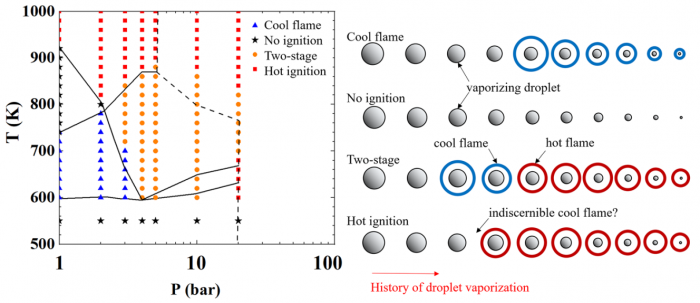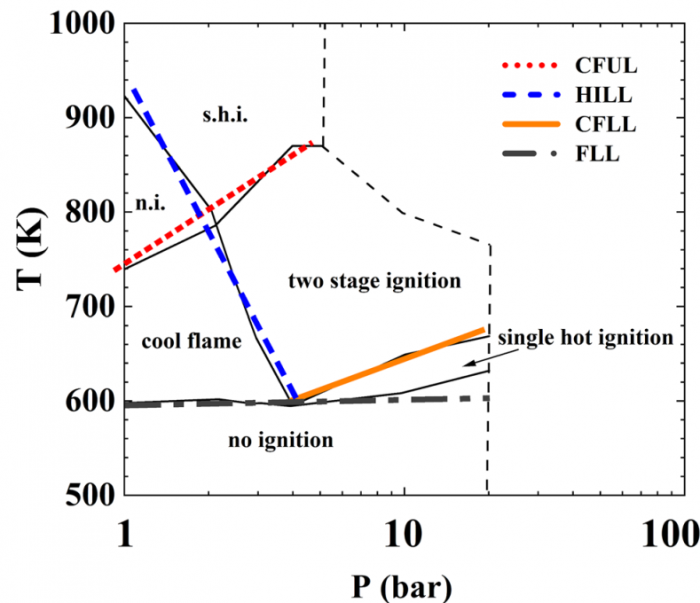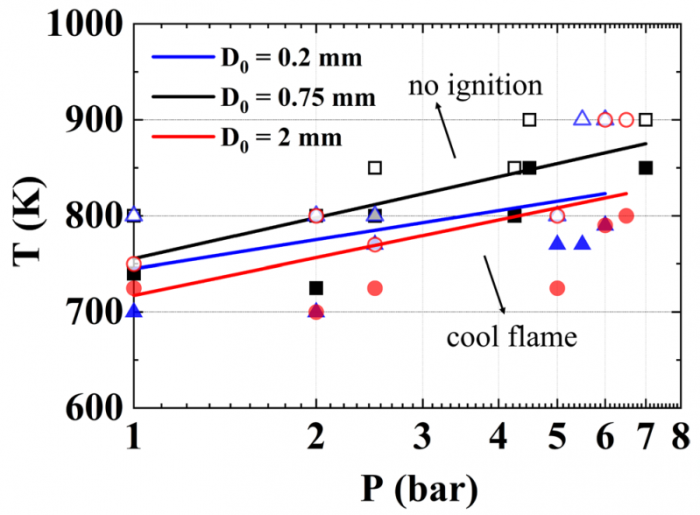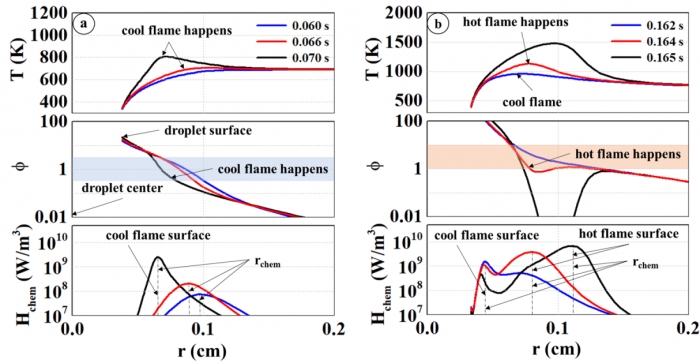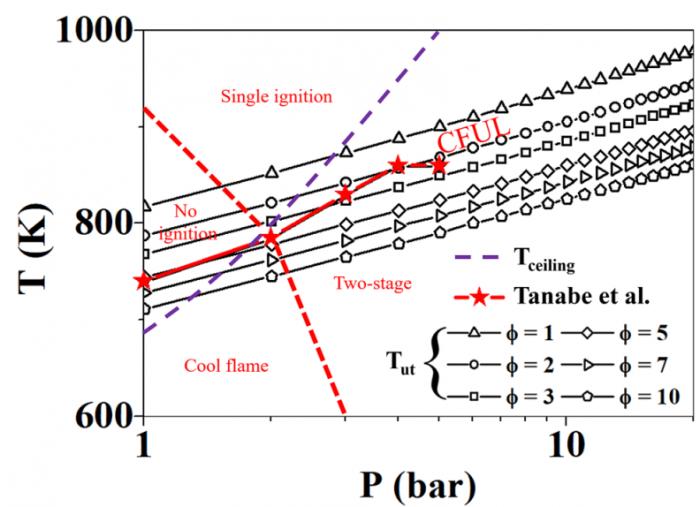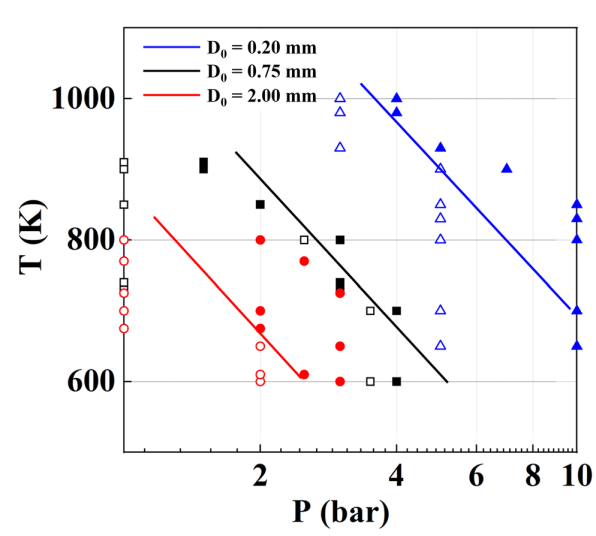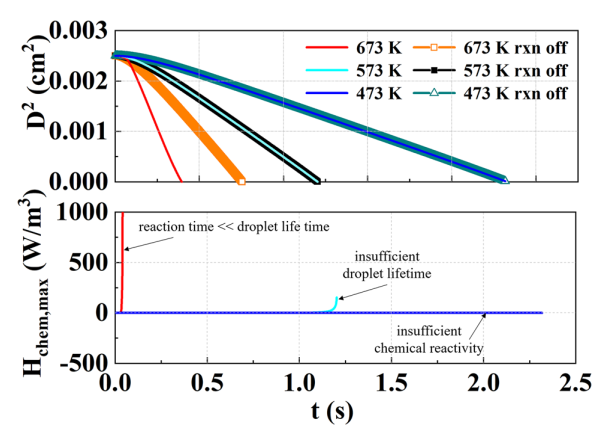W. Zhang, H. Zhou, Y.C. Liu, "Autoignition regime boundaries for n-heptane droplets under microgravity", Microgravity Science and Technology 34 (2022) 57.
This study focuses on the underlying physics and chemistry in the proximity of boundaries that divide different autoignition regimes in the temperature–pressure (T-P) diagram. Transient one-dimensional numerical simulations of single droplet (300 K, mostly 0.75 mm in diameter) combustion under different ambient (T = 600 ~ 1000 K, P = 1 ~ 20 bar) conditions in microgravity were used as the primary tool of investigations. Closed homogenous reactor simulations were used to evaluate the chemistry and equivalence ratio effect on the T-P diagram. In this study, four major boundaries on the T-P diagram were discussed; they are CFUL (Cool Flame Upper Limit), CFLL (Cool Flame Lower Limit), HILL (Hot Ignition Lower Limit) and FLL (Flame Lower Limit). The characteristics and transition mechanisms across these boundaries were investigated. It was found that the CFUL is controlled by the pressure dependent upper turnover temperature with various equivalence ratios. The CFLL is potentially caused by indiscernible two-stage heat release. The HILL describes a droplet size dependent boundary along which chemical time matches vaporization time. The FLL essentially describes the temperature at which low temperature combustion can be sustained during droplet life time

